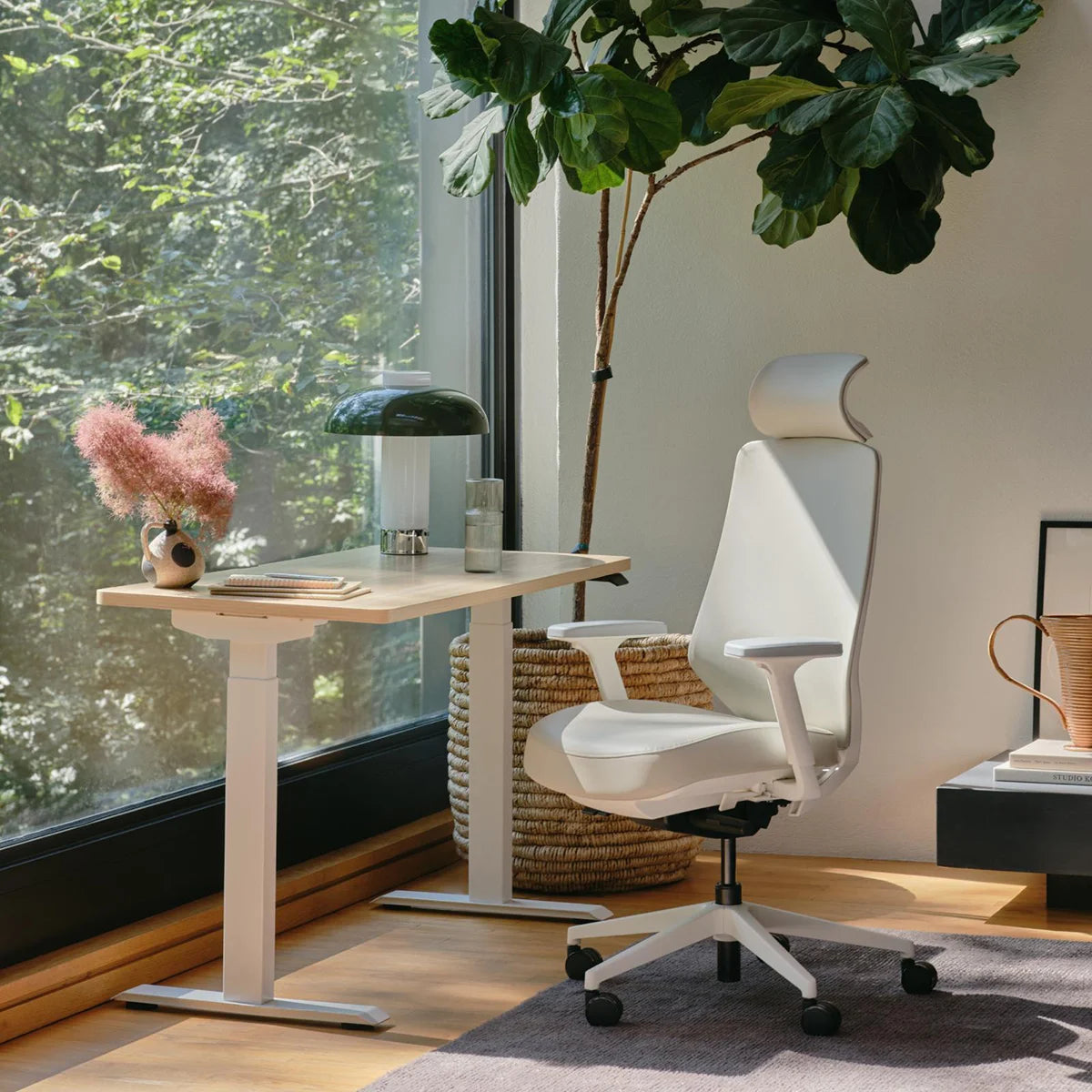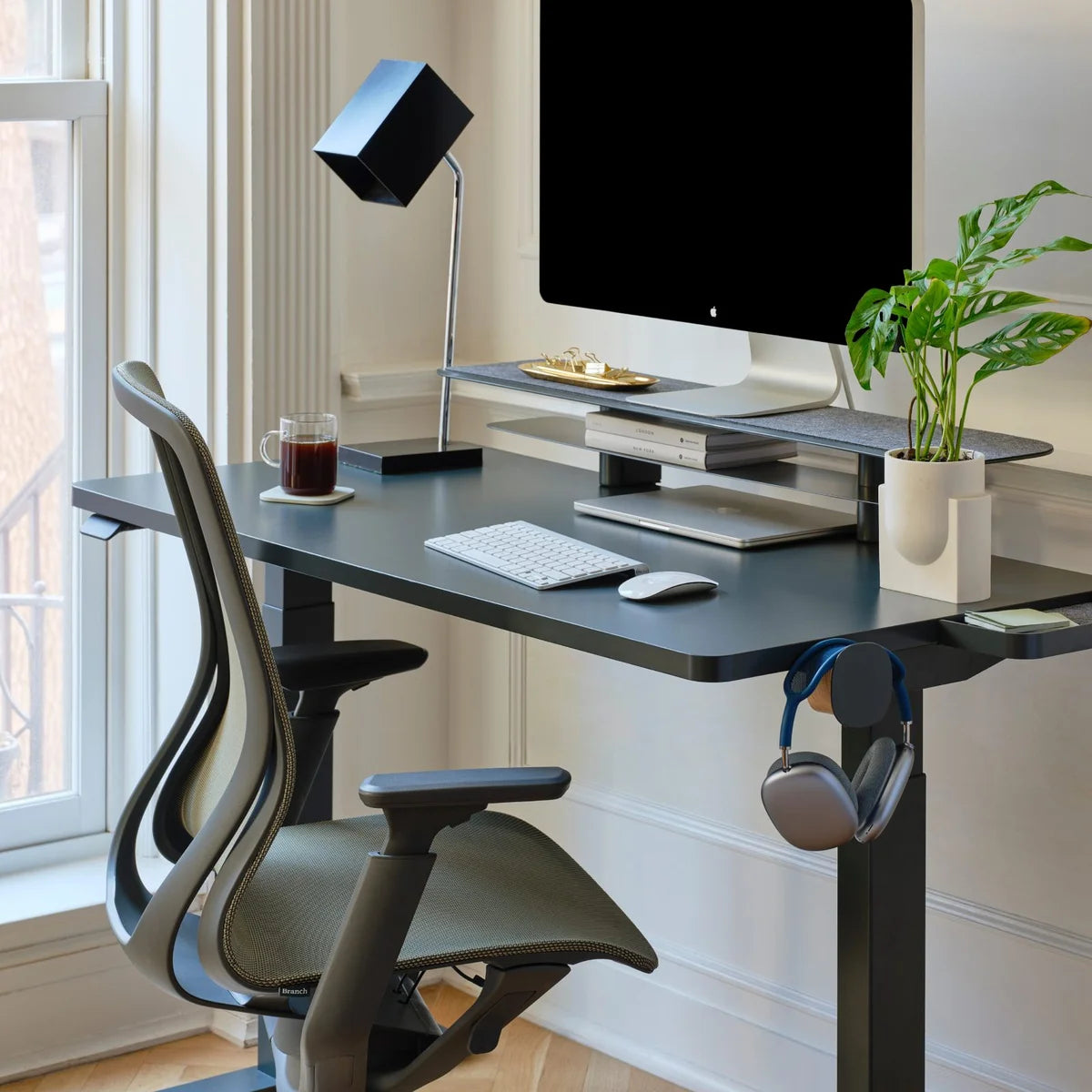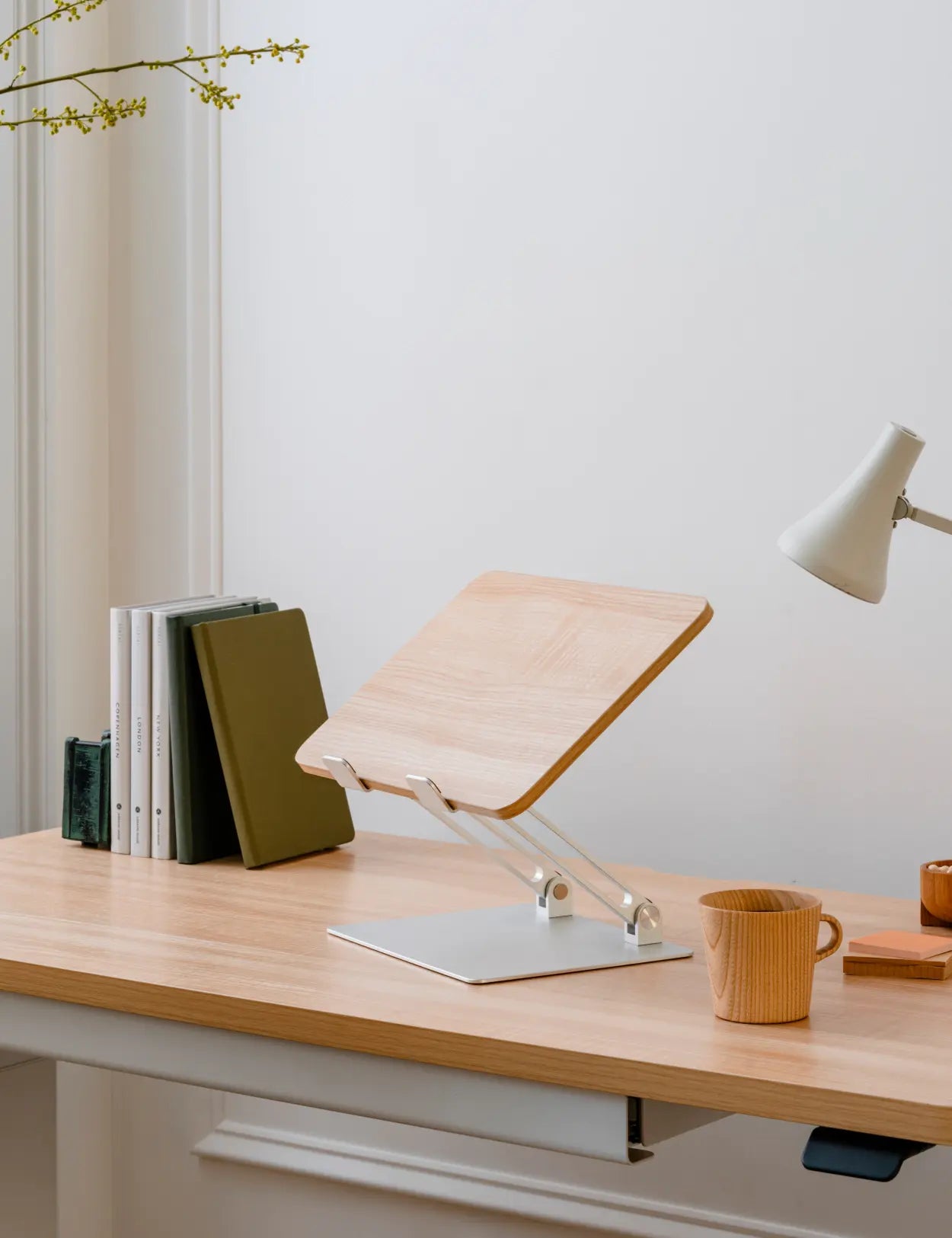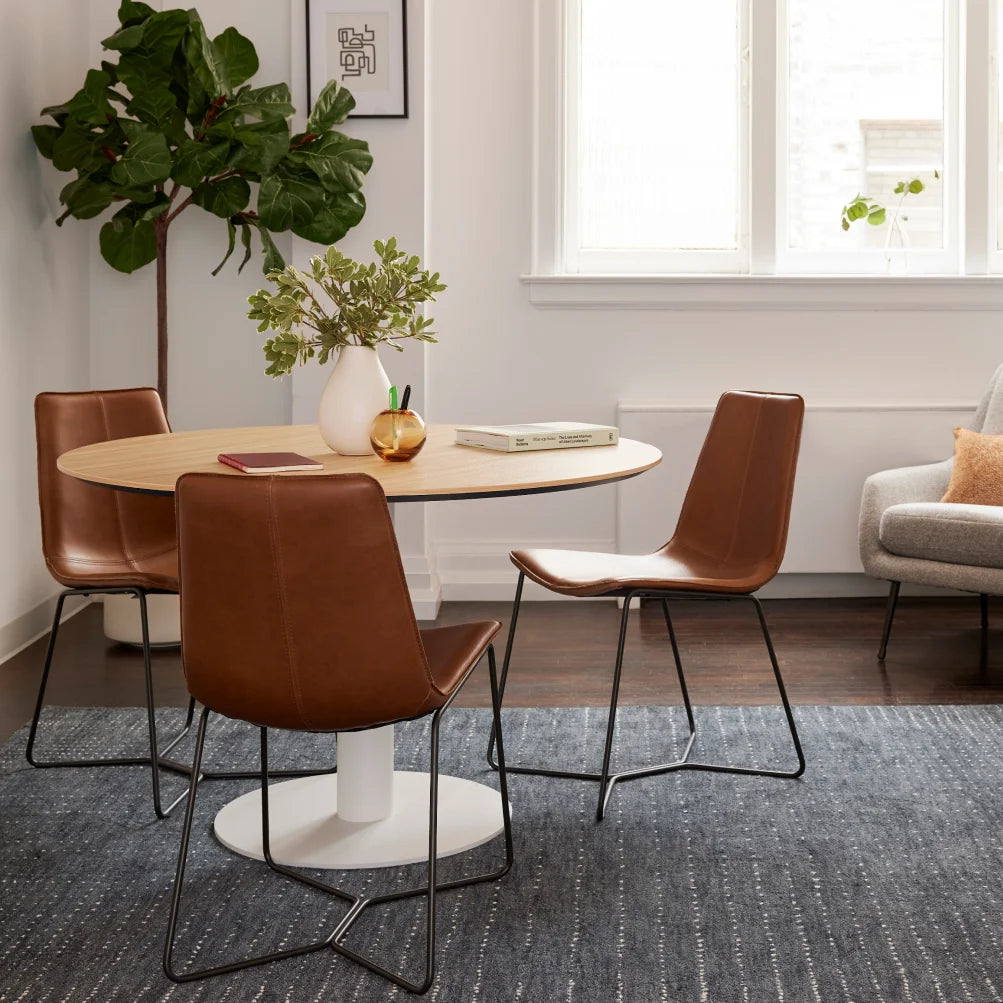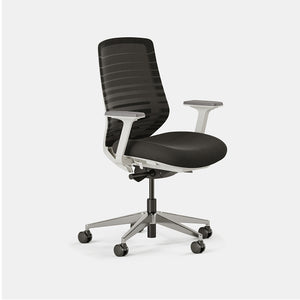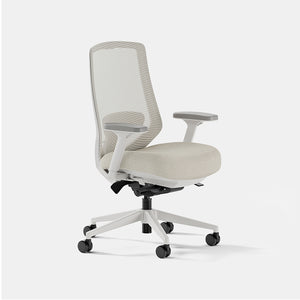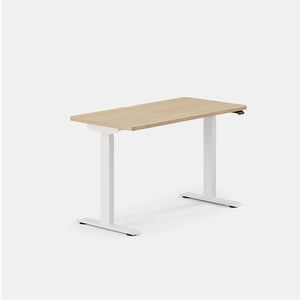Even if you don’t commute to your job, you should still have a functional workspace. Read on for a list of essential work-from-home equipment.
How to Set Up Your Home Office
Must-Have Pieces of Work-From-Home Equipment
1. Office Desk
2. Ergonomic Chair
3. Computer setup
- Laptop or MacBook
- Mac Pro tower or desktop PC with monitor(s)
- Wireless keyboard and mouse
4. Monitor Arm or Laptop Stand
5. Reliable Internet Service
Situational Work-From-Home Equipment
1. Headset
2. Webcam
3. Organization Accessories
4. Power Accessories
- Wireless charging pad or dock
- Power hub or strip
- Power adapters
Make It Your Own!
On new furniture, exclusive sales and more.





